The picturesque Takayama City, located in the Hida region of northern Gifu Prefecture, is a popular tourist destination with its elegant townscape where historical buildings and traditional culture from the Edo period still remain.
Since the distant past, Hida Takayama has been the central city of the Hida region. It is also known as “Hida’s Little Kyoto” and is an international tourist city that has received 3 stars in the Michelin Travel Guide.
Among the most popular tourist attractions are the historical spots around Takayama Station and the natural spots of the Northern Alps. There are also many attractive hot spring resorts that are gaining popularity, such as Okuhida Onsenkyo and Hida Takayama Onsen, which are full of attractions.
here we will introduce the best things to do in Takayama with a focus on sightseeing spots, attractions, and gourmet food centering on Hida beef, a superb brand of Japanese beef so that you can fully enjoy Hida Takayama, a town overflowing with charm.
Takayama Old Streets
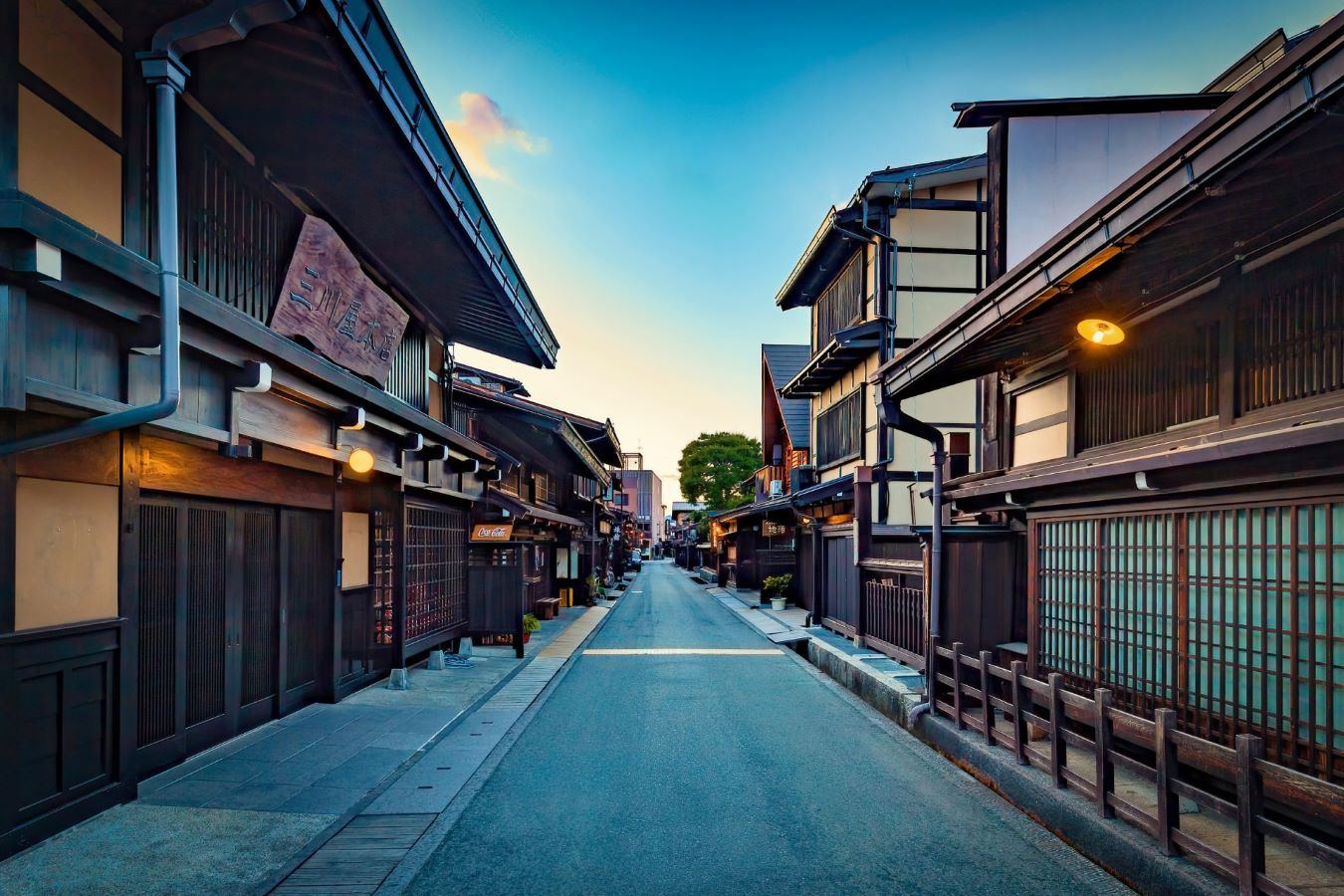
The unforgettable Takayama Old Town is also known as the Sanmachi Traditional Buildings Preservation District is an extremely well-preserved section of town that gives you the feeling of the old town that prospered as a merchant town during the Edo period.
It is also known as Hida’s Little Kyoto for its elegant appearance that retains traces of its former self and the picturesque Sanmachi Street, lined with wooden buildings built in the late Edo period, is an amazing spot to stroll around and get a sense of the townscape’s past days.
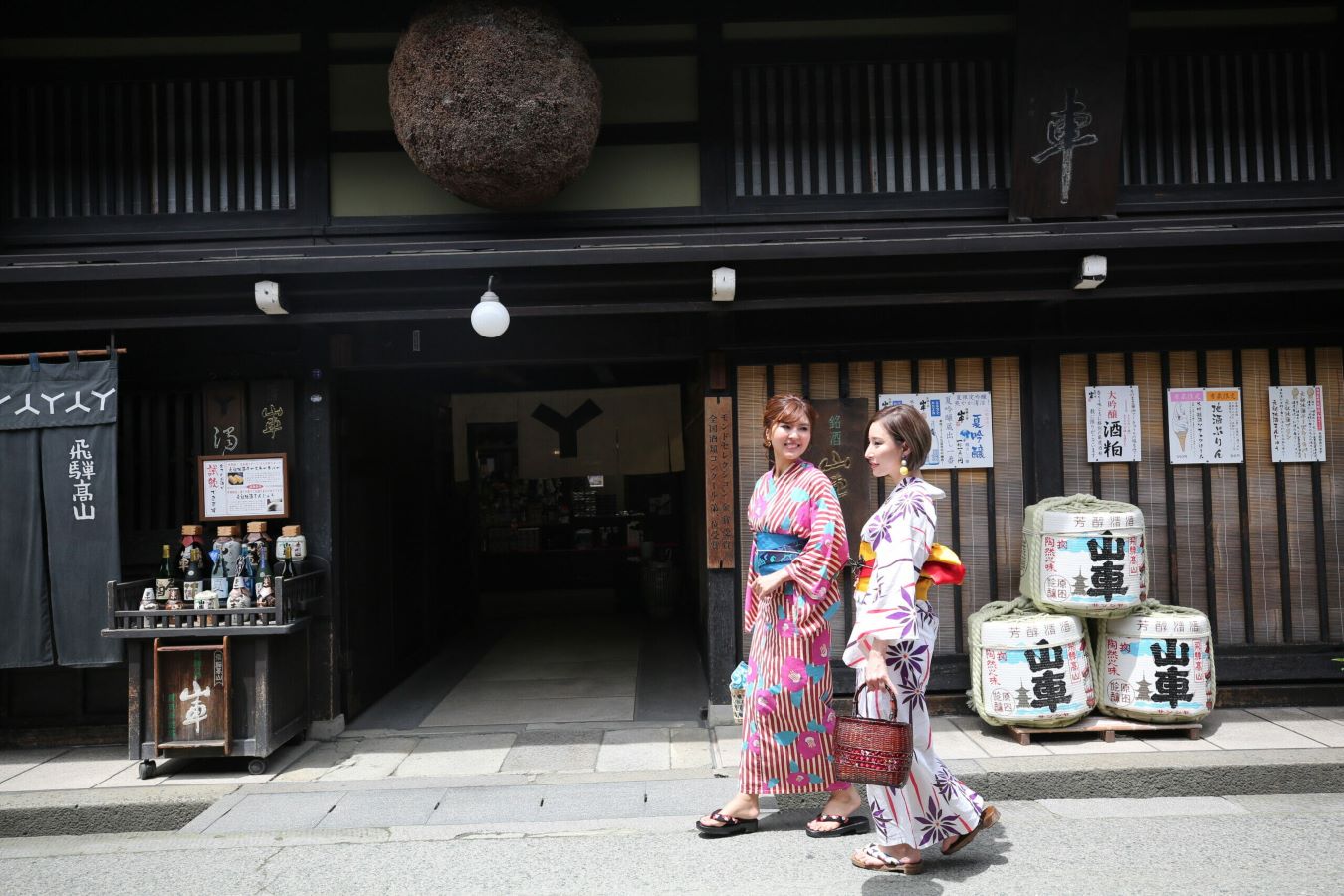
Mouth-watering Hida beef skewers, nigiri (rice balls), and mitarashi dumplings, Hida’s specialty, are sold at the stores, and you can enjoy eating local gourmet foods.
In Takayama, the sake brewing culture has been passed down from generation to generation thanks to the clean water and high-quality rice, and no less than seven sake breweries line the streets of town.
Miyagawa Naka Bridge

The picturesque Naka Bridge is a typical bridge in Hida Takayama that spans the Miyagawa River, which flows through the center of the beautiful downtown section of Takayama.
The distinctive red bridge is illuminated differently in spring, summer, fall, and winter. In spring, cherry blossoms and the bright red bridge create a beautiful harmony; in summer, people seeking cooler weather can enjoy the bridge; in fall, the bridge is illuminated with autumn leaves; and in winter, the bridge creates a fantastic atmosphere.
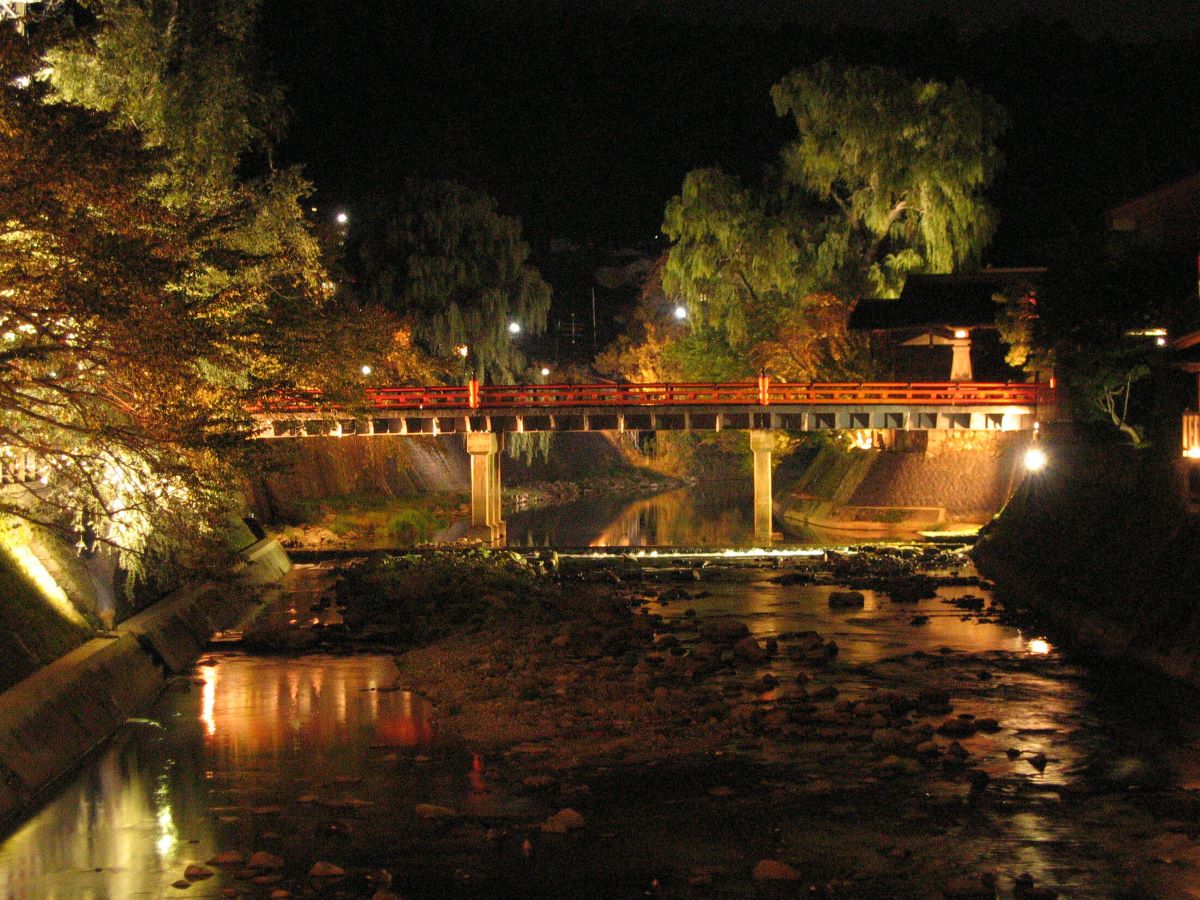
The bridge creates a great view both during the day and at night. It is a 10-minute walk from Takayama Station and close to the old townscape and Takayama Jinya (camp) building, so should definitely be on your list of things to see in Takayama.
Takayama Jinya Historical Government House
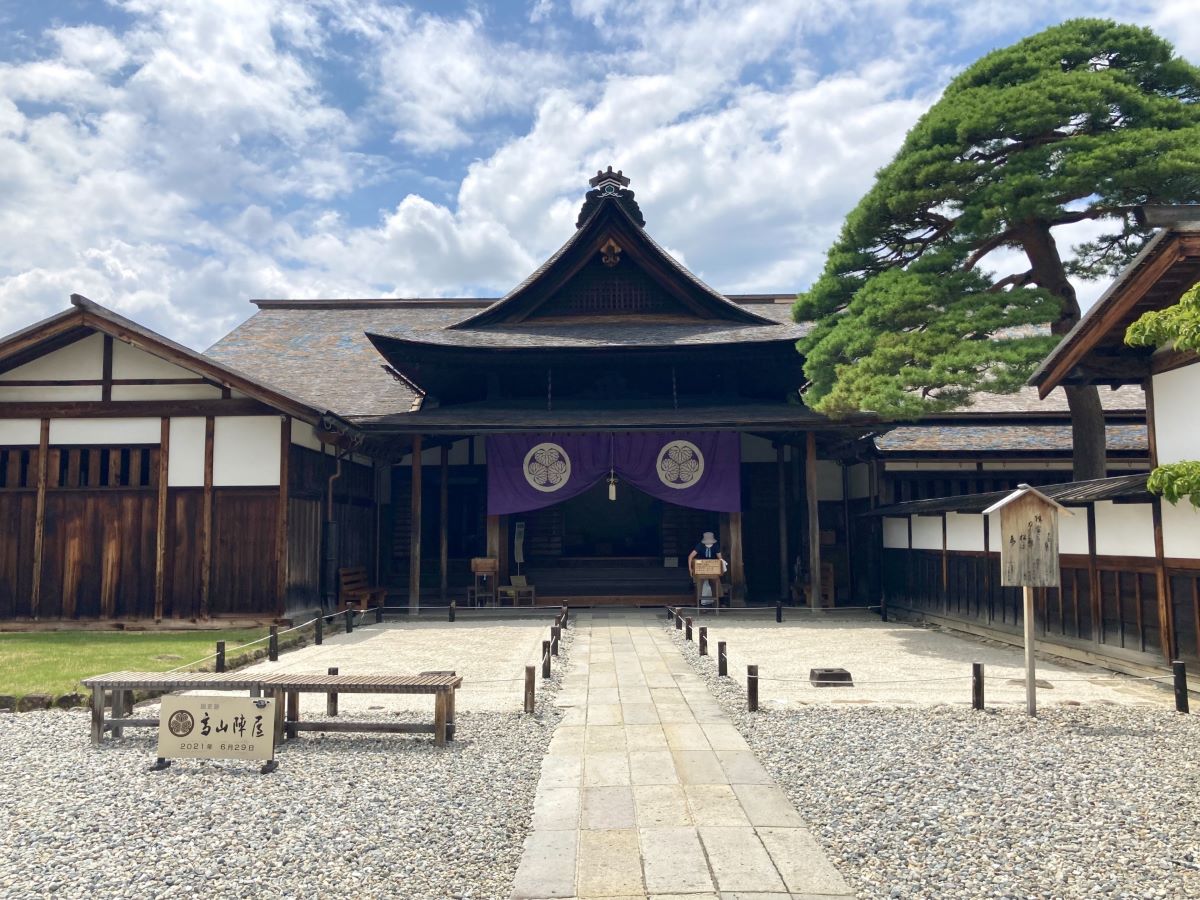
The surprisingly interesting Takayama Jinya is located not far from the beautiful Nakabashi Bridge. This was the prestigious government office that ruled Hida for 176 years from 1692, when the Edo Shogunate put Hida Province under its direct control.
It is the only remaining major building of the Edo period camp left in Japan, and visitors can see the “Oyakusho,” where officials dispatched by the shogunate worked, the “Kita no Oshirasu,” a civil court, and the “Gozo,” where tribute rice was stored.
For us the highlight of the tour was the “nugi (nail) concealment,” an ornament that hides the head of a nail. There are approximately 150 nail hides in the shape of rabbits throughout the camp, which are said to have the power to ward off evil spirits and protect buildings from fire.
Hida Folk Craft Village Hida-no-sato

The Hida Folkcraft Village, called Hida-no-sato is a wonderful little village museum that recreates the old Hida lifestyle in a rich natural outdoor setting.
The history and nature of the surrounding area are introduced through thatched houses such as the Gassho-zukuri style and thatched houses with roofs made of wood shingles torn from tree trunks.

You can also try your hand at folk crafts such as making a Sarubobo monkey (a typical Hida folk craft) and kumi-himo (braided cord) at the hands-on class.
Funasaka Sake Brewery (Brewery in Takayama)
The must-visit Funasaka Sake Brewery is a wonderful 200-year-old sake brewery located in the old town of Takayama. The timeless brewery produces delicious sake using spring water from the Hida mountains and high-quality sake rice.
The sake brewery has a sake bar, a restaurant, a sake-tasting corner, and a souvenir shop.
Miyagawa and Jinya-Mae Morning Markets
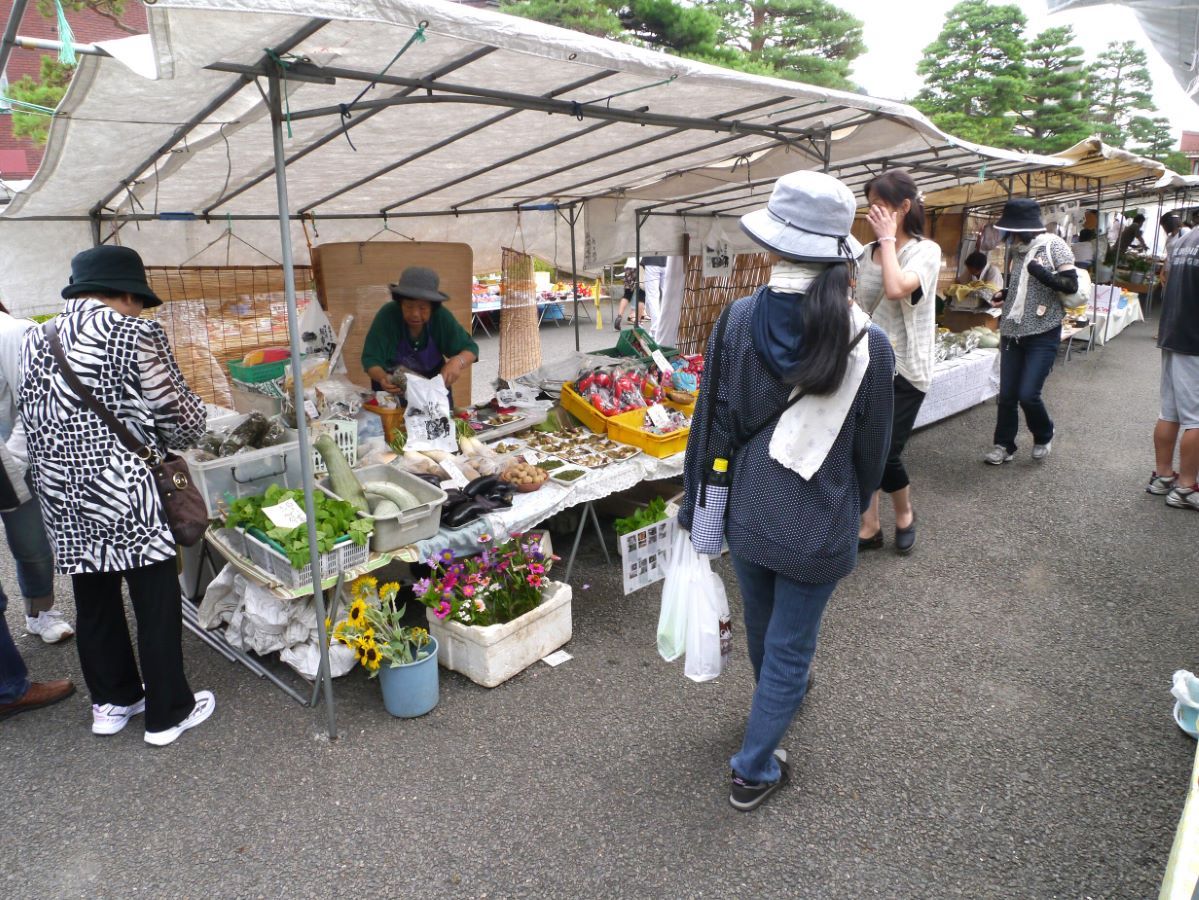
These two charming markets are a morning tradition in Takayama.
The Jinya-mae morning market sells many delicious handmade pickles and flowers, while the Miyagawa Asaichi offers freshly picked vegetables, fruits, folk crafts, and more along the 300-meter stretch of river from Kajibashi Bridge to Yayoi Bridge.

It takes about 15 minutes on foot from Jinya-mae to Miyagawa morning markets.
Sakurayama Hachimangu Shrine and Takayama Yatai Kaikan
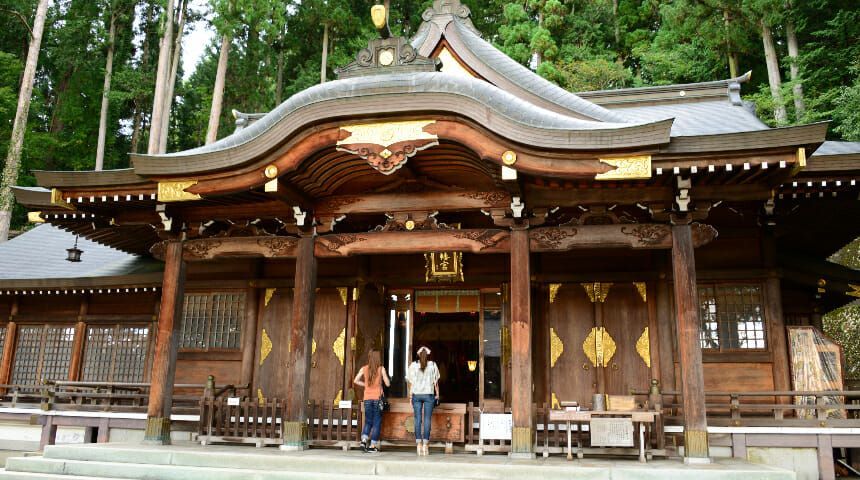
To experience the history and traditional culture of Takayama the impressive Sakurayama Hachimangu Shrine is a historic shrine dedicated to Emperor Ojin, which was built approximately 1,600 years ago.
The autumn Takayama Festival called Hachiman Matsuri is held at this shrine and attracts spectators from all over Japan
The yatai pulled at the festival were built in the Edo period and are intricate and breathtaking. At the Takayama Yatai Kaikan, located within the shrine precincts, you can actually see the yatai used in the festival.
This is a spot where you can experience the history and traditional culture of Takayama.
Note:The spring Takayama Festival Sanno Matsuri is held at Hie Shrine.
Yoshijima Heritage House

The charming Yoshijima Heritage House was rebuilt in 1907 and is one of Japan’s representative townhouse (known as machiya) architectural structures.
Designated as an Important Cultural Property, the beauty of the three-dimensional latticework is highly acclaimed.
The delicate and graceful design of the lacquered pillars and beams is also noteworthy.
Fujii Folk Museum

The fascinating Fujii Folk Museum exhibits a collection put together by Tadakazu Fujii, a local physician in Hida Takayama. The charming museum exhibits a wide range of antiques and folk art from Hida Takayama and the highlights for us included the hanging scrolls painted by Japanese-style painter Yokoyama Taikan, literary artist Tomioka Tessai, and Zen master Ikkyu.
Wonderful old pottery and Kyoho Hina dolls created more than 270 years ago can also be seen, and those interested in antiques and Japanese history and crafts will definitely be satisfied with the collection.
Don’t forget to check out the gate which is made of cypress and modeled after the gate of Takayama Castle’s Ninomaru, is also an eye-catching and unusual feature.
Hida Kokubunji Temple

The majestic Kokubunji temple, not far from Takayama Station is one of the Kokubunji temples built in the Nara period (710-794) after Emperor Shomu issued an imperial decree to build Kokubunji temples in various places in Japan.
The impressive three-storied pagoda is designated as a cultural asset by the prefecture.
The bell tower gate was relocated in 1695, when Takayama Castle was demolished and the Hida Province became the domain of the Emperor.
The roof was originally thatched but was replaced with a copper shingle roof in 1955.
The wooden seated statue of Yakushi Nyorai (Heian period), the wooden standing statue of Sho-Kannon Bosatsu (Fujiwara period), and the Kotorimaru-tachi sword are all designated national important cultural properties and require an entrance fee.
Along with the three-story pagoda, this large ginkgo tree is the most impressive. Regarded as an important natural monument, the tree is 28 meters tall and 1,200 years old and it is a miracle that it has not collapsed in this snowy Hida area.
World Heritage Site Shirakawa-G

The must-visit Shirakawa-go is a picturesque and timeless village located in the mountains in Shirakawa Village about 60 minutes by bus from Takayama City.
It is one of the archipelago’s most famous attractions and is visited by over 1 million travelers a year. The Gassho-zukuri style villages with traditional thatched rooves in the Ogimachi area are registered as a World Heritage site.
The thatched roofs and gassho-zukuri roofs that characterize Shirakawa-go employ a unique building technique designed to protect houses from the snow in the harsh winters when crops could not grow and to raise silkworms.

It is fascinating to be able to take a glimpse into the traditional way of life and how to village lived together with nature.
Autumn, when the trees are covered with autumn leaves and the scenery looks like a fairyland, and winter, when the area is covered with snow, are also beautiful, and a visit at any time of the year is highly recommended.
Hida Products Museum
Hida Bussan Kan, which was relocated and renovated in February 2018, is a souvenir shop with over 7,000 items of Takayama specialties. The lineup ranges from Hida’s famous sweets, local sake, pickles, folk crafts, Takayama ramen, and Hida beef.
You can also learn about the episodes and origins of the special souvenirs through pop-ups and events in the museum. Visitors can also try their hand at making traditional Hida folk crafts such as “sarubobo” and “shio senbei” (salted rice crackers).
Setogawa River and Shirakabe Dozo Street In Hida City
Along the tranquil and crystal clear Setogawa River, where more than 1,000 carp swim in the clear waters, is an elegant area lined with charming townhouses with white-walled storehouses and demarcated gabled roofs.
This nostalgic townscape is from the Edo period (1603-1867), when Kanamori Kashige, the lord of Masushima Castle at the time, encouraged the construction of a town similar to that of Takayama.
The scenery is beautiful in each of the four seasons, making it a popular spot and the face of the castle town of Hida Furukawa. Carp can be seen from early April to late November.
Access: JR Hida Furukawa Station→5 min. walk
Shin Hotaka Ropeway
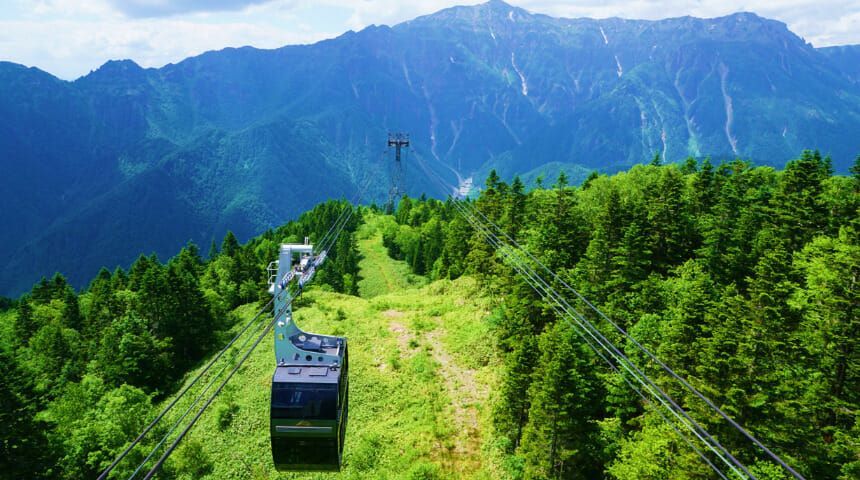
The exhilarating Shin Hotaka Ropeway takes you from the foot of the mountain to the summit in about 12 minutes. From the transfer station on the way to the summit, you can take Japan’s only double-decker ropeway and enjoy a 2,200-meter ride in the air.
At the mid-point station, there is even an open-air bath and footbath with natural hot spring water, and at the summit, there is a breathtaking observatory with a panoramic view of the Northern Alps.
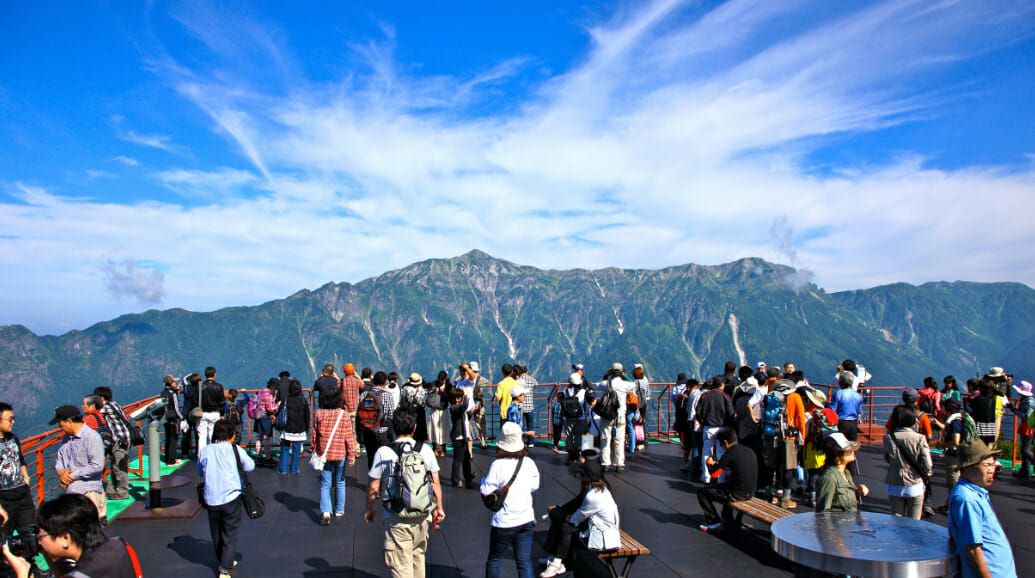
There’s also a cafeteria and a coffee shop.
Address: Shin Hotaka, Okuhida Onsenkyo, Takayama City, Gifu Prefecture
Access: Shin Hotaka Ropeway by Nobi Bus Operating hours: 8:00 – 17:15 *Schedules may change depending on the season.
The 13 unique waterfalls of the Utsue 48 Falls
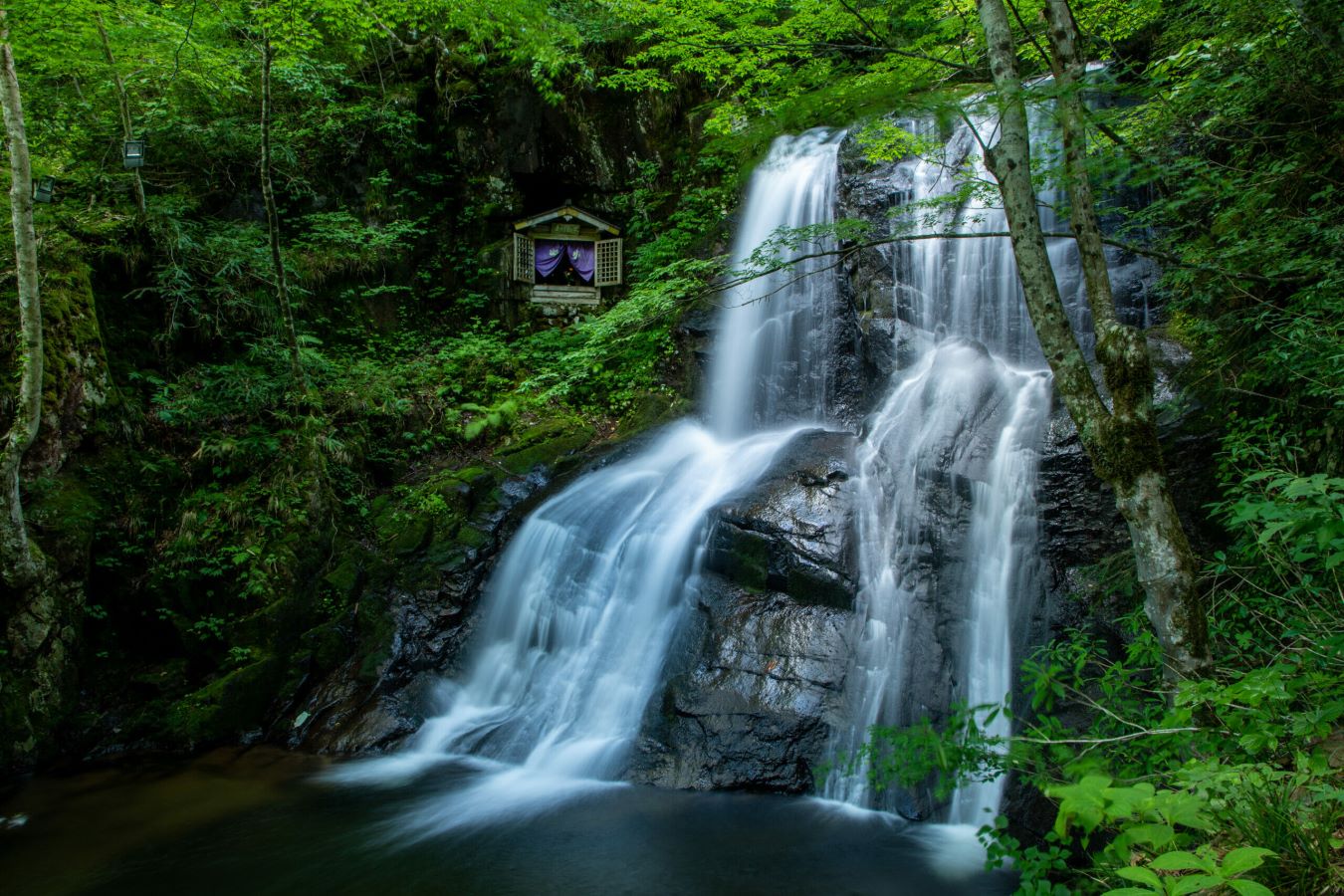
Selected as one of the 100 best natural spots in Japan the exhilarating and picturesque Utsue 48 waterfalls of Utsue are about a 25-minute drive from the center of Takayama City.
The name comes not from the literal 48 waterfalls, but from the legend of a young man named Yoshihachi. There are actually a total of 13 named waterfalls.
It takes about one hour from the first waterfall to the highest one, or about one and a half to two hours for a round trip. The path is well-maintained but wear athletic shoes.
The most recommended waterfall at Utsue 48 Waterfalls is the fifth, Kaminidan Falls. Also known as the “Couple Falls,” the two majestic waterfalls cascade down beautifully.
The contrast between the two waterfalls and the 48 Waterfalls Fudo Myoo enshrined near the waterfalls is truly wonderful and makes you feel as if time has stood still since ancient times.
Hida Great Limestone Cave
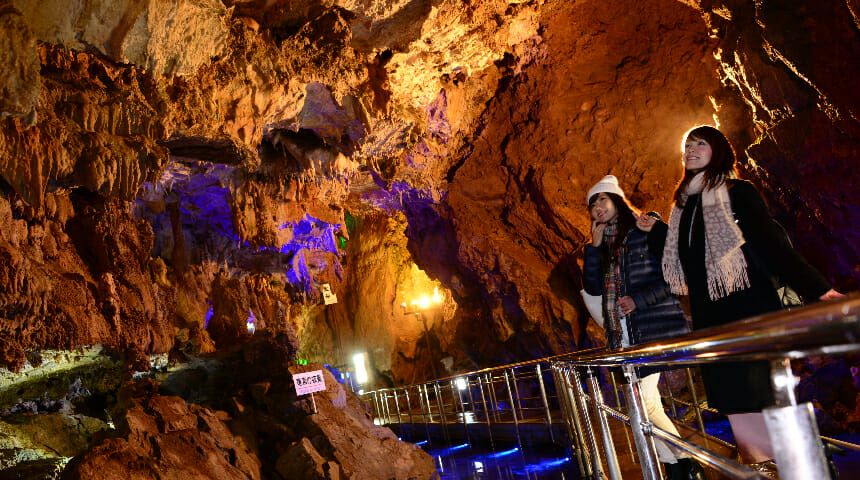
The extraordinary Hida Great Limestone Cave is an 800-meter-long limestone cave located between Takayama city and Okuhida Onsen, at an elevation of 900 meters.
Inside the subterranean lair, there are many interesting formations, beginning with a mysterious blue space wonderfully called Ryugu no Yorukei or Night View of the Dragon Palace.
Beyond that, the Palace of Dreams continues, and the Hida Great Limestone Cave is characterized by its many icicle-shaped stalagmites. In Cave 3, cave corals can be seen all over the walls, and the dynamic crevices are overwhelming.

The tunnel connecting the first and second caves is also a spot of interest. Colorful lights create a fantastic atmosphere, and it is said to be a love spot where couples who pass through can deepen their love.
Near the caves, there is a vow bell, and many couples attach vow keys and vow emas to the bell.
Takayama Matsuri no Mori
At the unforgettable Hida Takayama Festival Forest, six gorgeous and authentic Heisei festival floats are displayed in an extraordinary underground dome built by excavating a mountain slope.
Seven intricate yatai festival floats perform a fantastic karakuri, which is a type of puppet show every five minutes, including the renowned Fukujyudai Karakuri, a Heisei era yatai based on the seven gods of good fortune, which is performed every hour at half past the hour.
Along with being highly entertaining the unique dance of the karakuri dolls is also a good omen, and there is a nice surprise when you see it all the way to the end.
Also of note is the gigantic Odaiko which is the world’s largest Japanese drum and is made from a single tree and has a maximum diameter of 2.73m. Three Karakuri dolls beat the drum every hour, creating an impressive aura in the cave-like museum.
Note: For the bug lovers, the adjacent World Insect and Butterfly Museum scenic 30,000 species. From spring to fall, there is also a forest where you can play with the squirrels.
Admission: 1,000 yen
Access: From the Takayama Nobi Bus Center in front of JR Takayama Station catch the Nobi Bus bound for Matsuri no Mori. Ride for about 15 minutes and alight at the last stop.
Cherry blossom viewing in Takayama

Around early April, cherry blossoms are at their best in Takayama, and we recommend visiting the area around JR Takayama Station, such as the area around Nakabashi Bridge, or Miyagawa Ryokuchi Park, n a 20-minute walk from the station.
In particular, the cherry blossoms around the Naka-bashi Bridge are lit up at night, creating a fantastic sight.


